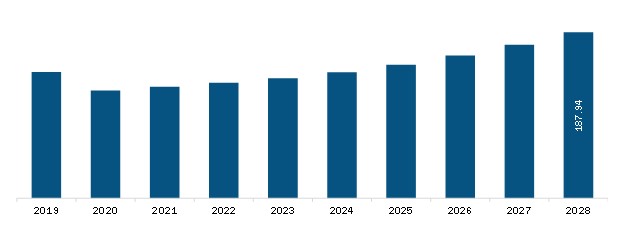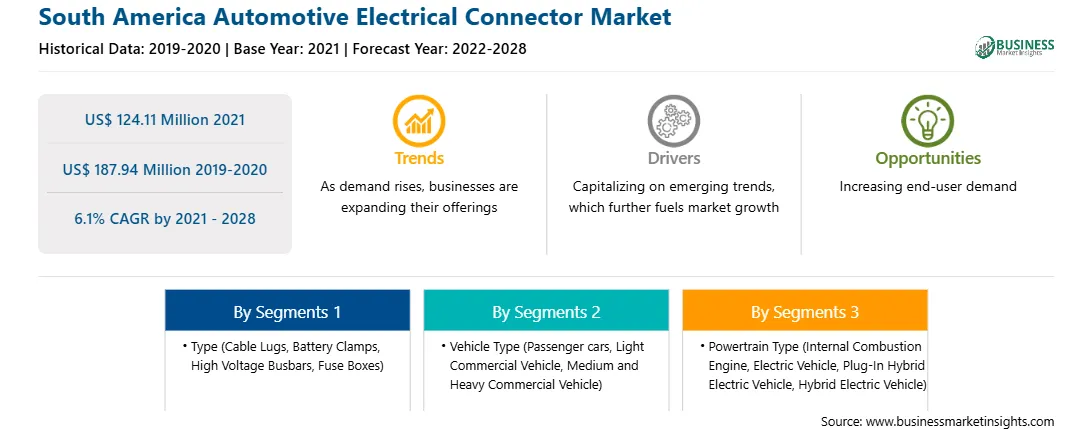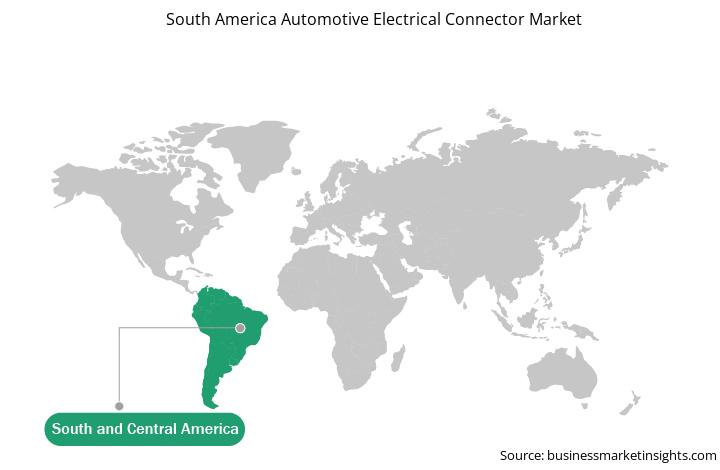Improving power distribution architecture and rising electrification of vehicles across the globe are fueling the market growth. However, a continuous decline in vehicle production volume is expected to restrict the market growth during the forecast period.
The automotive industry is growing with the advancements in electronics and electrical systems of vehicles. The advent of connected cars, electric cars, and hybrid cars is accelerating the automotive industry's growth due to enhanced features in these vehicles. Automobile companies are offering maximum features for the customers to enhance their driving experience. The numerous developments in vehicles have increased vehicles' electrical systems' count as more connected technologies are integrated into vehicles. There is an increase in the importance of automotive electrical connectors as they form an efficient connection for power transmission. Electrical connectors such as busbars and fuse boxes play a vital role in the automotive industry.
To distribute power effectively, specifically in electric vehicles, the demand for high voltage busbars is rising, which is driving the market. For instance, in March 2020, Royal Power Solutions, a supplier of automotive components, introduced a new connector and conductor product for electric vehicles and hybrid vehicles. The company introduced a new High-Power Lock Box (HPLB) connector and RigiFlex busbar with integrated HPLB terminals. Similarly, in March 2021, Furukawa Electric Co., Ltd started to deliver high-voltage power distribution component modules, such as busbars, for Toyota MIRAI and other hydrogen fuel cell vehicles. The increasing electrification in vehicles creates a need for advanced connectors such as high voltage busbars and fuse boxes, which is driving the market.
Brazil has the third-highest number of COVID-19 cases in South America. Countries such as Colombia, Ecuador, Chile, Peru, and Argentina are also witnessing the adverse effects of the pandemic across various industries. The governments in South America have taken an array of actions to protect their citizens and contain COVID-19's spread. It is anticipated that the market in South America will face a steep decline as the majority of stimulus packages deployed by the government were majorly focused on public healthcare and tax relief. In addition to this, the online and retail distribution channels will also face negative impacts due to supply chain disruptions and the unavailability of raw materials. The sharp decline in business activities and product sales are expected to directly affect the growth rate of the automotive electrical connectors market in this region for the next three to four quarters.

Strategic insights for the South America Automotive Electrical Connector provides data-driven analysis of the industry landscape, including current trends, key players, and regional nuances. These insights offer actionable recommendations, enabling readers to differentiate themselves from competitors by identifying untapped segments or developing unique value propositions. Leveraging data analytics, these insights help industry players anticipate the market shifts, whether investors, manufacturers, or other stakeholders. A future-oriented perspective is essential, helping stakeholders anticipate market shifts and position themselves for long-term success in this dynamic region. Ultimately, effective strategic insights empower readers to make informed decisions that drive profitability and achieve their business objectives within the market.

| Report Attribute | Details |
|---|---|
| Market size in 2021 | US$ 124.11 Million |
| Market Size by 2028 | US$ 187.94 Million |
| Global CAGR (2021 - 2028) | 6.1% |
| Historical Data | 2019-2020 |
| Forecast period | 2022-2028 |
| Segments Covered |
By Type
|
| Regions and Countries Covered | South and Central America
|
| Market leaders and key company profiles |
The geographic scope of the South America Automotive Electrical Connector refers to the specific areas in which a business operates and competes. Understanding local distinctions, such as diverse consumer preferences (e.g., demand for specific plug types or battery backup durations), varying economic conditions, and regulatory environments, is crucial for tailoring strategies to specific markets. Businesses can expand their reach by identifying underserved areas or adapting their offerings to meet local demands. A clear market focus allows for more effective resource allocation, targeted marketing campaigns, and better positioning against local competitors, ultimately driving growth in those targeted areas.

The South America Automotive Electrical Connector Market is valued at US$ 124.11 Million in 2021, it is projected to reach US$ 187.94 Million by 2028.
As per our report South America Automotive Electrical Connector Market, the market size is valued at US$ 124.11 Million in 2021, projecting it to reach US$ 187.94 Million by 2028. This translates to a CAGR of approximately 6.1% during the forecast period.
The South America Automotive Electrical Connector Market report typically cover these key segments-
The historic period, base year, and forecast period can vary slightly depending on the specific market research report. However, for the South America Automotive Electrical Connector Market report:
The South America Automotive Electrical Connector Market is populated by several key players, each contributing to its growth and innovation. Some of the major players include:
The South America Automotive Electrical Connector Market report is valuable for diverse stakeholders, including:
Essentially, anyone involved in or considering involvement in the South America Automotive Electrical Connector Market value chain can benefit from the information contained in a comprehensive market report.